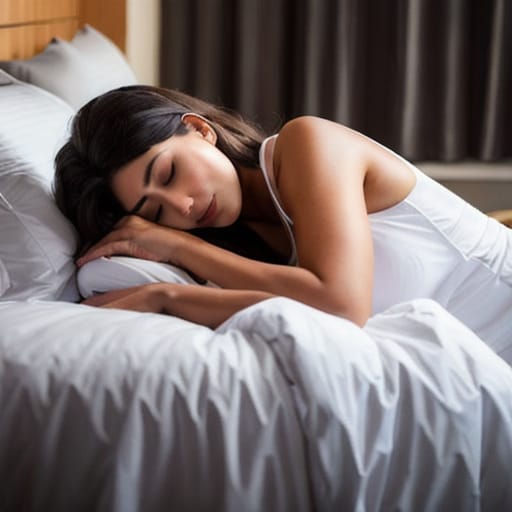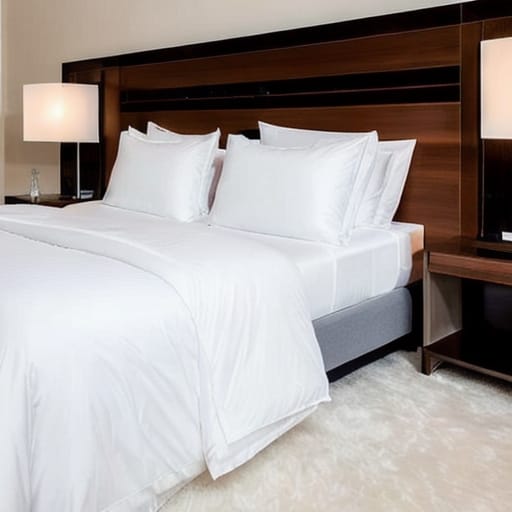Are you looking to upgrade your bedding to a luxurious down-filled comforter? With so many options on the market, it can be tricky to determine what makes for the best down comforter. This guide covers everything you need to know—from fill power and construction to warmth ratings and expert picks—to find your ideal down-filled bedding essential.
A Primer on Down Comforters
Before diving into specifics, let’s review the basics.
What is a Down Comforter?
A down comforter is a bedding essential filled with insulating down material to provide warmth and comfort while sleeping. Unlike blankets which lay on top of you, comforters are designed to drape over the bed and keep you cozy beneath.
- Down comforters are filled with fine, fluffy underlayer feathers from ducks or geese that trap heat exceptionally well.
- They are valued for providing superior warmth and comfort night after night.
- Comforters with downfill offer more insulation per ounce than nearly any other material.
Why Choose Down?
There are many reasons Down is revered when it comes to insulation for comforters:
- Warmth – Down provides unbeatable warmth without weight. The clusters trap air to retain heat.
- Lightweight – Superior loft and insulation means less fill is needed for warmth.
- Breathability – Down allows moisture and heat to pass through, keeping sleepers comfortable.
- Durability – With proper care, a quality down comforter can last over a decade.
- Luxury – Down offers a hotel-quality sleep experience at home.
For these reasons and more, down comforters deliver exceptional comfort every night, making them a worthy investment for your bed.
Understanding Down Fill Power
Not all down is created equal when it comes to insulation and warmth. Fill power is the key indicator of down quality and warmth capabilities.
What is Fill Power?
- Fill power is a measurement (in cubic inches) of the loft or fluffiness of down insulation.
- It measures the space one ounce of down fills in cubic inches when fully lofted.
- A higher fill power means better insulating performance by creating more trapped air.
Most down comforters have to fill power between 400 to 900. Better quality comforters typically start at around 600 fill power.
Significance of Fill Power
The fill power strongly influences two main factors:
- Warmth – Higher fill power down traps more air and provides better insulation with less weight. An 800-fill power comforter keeps you warmer with less down than a 600-fill one.
- Weight – Given the extraordinary insulating properties of higher fill down, less material is needed in the comforter. Higher fill power means lighter weight.
That said, lower fill powers around 500-550 can still make nice comforters with slightly more weight. The right fill power depends on your warmth needs and weight preference.
Evaluating Down Types: Goose vs. Duck
The specific type of down—goose or duck—also impacts overall quality and performance.
Goose Down
- Goose-down clusters tend to be larger and more uniform in size and shape.
- Larger clusters trap more air, providing better insulation per ounce.
- Goose down generally has higher fill powers on the range of 600-900.
- Comforters with premium goose down tend to be lighter and warmer.
Duck Down
- Duck-down clusters are smaller and less uniform than goose-down.
- Smaller clusters mean somewhat lower fill power, usually 400-700.
- Duck down comforters is typically heavier while providing very good warmth.
- The lower price point of duck down makes it appealing for more budget-focused shoppers.
Both duck and goose down make excellent insulators for comforters. Choose goose down if seeking maximum warmth for weight. Select duck down to keep costs lower while still getting a quality sleeping experience.

Construction: Box Baffle vs. Sewn-Through
A comforter’s outer fabric and underlying construction impacts not only durability and longevity but also warmth. Two main methods exist baffle box and sewn-through.
Box Baffle Construction
- Individual fabric pockets box in down into sections evenly across the comforter.
- Prevents the down from shifting or clumping in certain areas.
- Supports even distribution of insulation and consistent warmth.
- More intricate design allows for higher fill power down.
Sewn-Through Construction
- Down is divided by linear seams stitched from top to bottom.
- Tend to be lower priced and suited for lower fill down.
- This can result in downshifting causing cold spots over time.
- Provides good warmth but limited fill power compared to baffle box.
While box baffle comforters allow for higher fill down and hence more warmth, a quality sewn-through comforter with the right fill still makes a good choice for many.
Selecting the Right Weight Comforter
The insulation you need largely depends on the temperatures you want your comforter for as well as your sleep preferences. Guideline comforter weights for different needs:
| Use | Example Environment | Weights |
|---|---|---|
| Summer or hot sleepers | Four-season or adjustable warmth | Lightweight: 300-400 g |
| Four season or adjustable warmth | Most areas with AC | All-season: 400-500 g |
| Colder sleepers plus winter use | Cold northern areas | Ultra-warm: 600 g+ |
Pro tip: Those wanting flexibility can get a lightweight comforter and warmer duvet for modular layering options.
Quality Materials and Fabrics Matter
A quality down comforter needs a quality cover that contains the fill properly, allows airflow, and provides pleasing comfort against your skin.
Cover Fabric Counts
- Percale Cotton: Breathable and smooth 200-400 thread count
- Sateen Cotton: Smooth luxury around 300 thread count
- Egyptian Cotton: Top-tier 400-600 thread count fabric
tip: Ensure the weave is tight enough to prevent poking from the inner fill.
Fabric Properties
Ideal comforters offer covers with special attributes:
- Breathability: Allows water vapor and heat to pass through
- Moisture wicking: Quick dry properties to keep skin comfortable
- Durability: Higher thread counts indicate stronger seams and barriers
High-quality materials feel better against skin all night.
Ethical Sourcing and Certifications
With the comforter market lacking regulations, smart shoppers should verify responsible sourcing practices through certifications like the Responsible Down Standard (RDS) which confirms humane treatment of geese and ducks.
Additional trust marks like OEKO-TEX certification help validate product safety and purity for consumer peace of mind.
Weighing Expert Recommendations
With so many variables to balance in finding your ideal comforter, expert guidance can help narrow decisions. A few top choices:
| Expert Organization | Current Top Pick | Cost |
|---|---|---|
| Good Housekeeping Institute | Royalay White Goose Down | $220-340 |
| Wirecutter Testing Team | Brooklinen Lightweight Down | $249+ |
| OutdoorGearLab Reviewers | Sea to Summit Ember EB III | $260-320 |
While price and preference vary, cluster recommendations around high quality, ethically sourced down paired with durable, breathable outer layers from reputable brands. Consider options like Brooklinen and Parachute for quality at lower price points.
Extend Comforter Lifespan with Proper Care
To extend a down comforter investment for over a decade, adhere to care guidelines:
- Dry clean comforters every 2 years to sanitize and restore loft
- Use large capacity machines on delicate if home washing
- Air dry fully before storage to prevent moisture damage
- Stuff in breathable fabric like cotton during storage to allow airflow
- Fluff comforter weekly and break up clumps if they form

The Takeaway: Prioritize Quality and Comfort
Finding your perfect down comforter involves balancing fill power warmth, weight, construction quality, ethical sourcing, and budget. As you evaluate options, keep top of mind what matters most: unparalleled comfort for your best night’s rest. By investing just a bit more into a premium, responsibly-sourced down comforter, you’ll enjoy the warm cozy nights of rest you deserve.
Frequently Asked Questions
What is fill power and why does it matter?
Fill power measures the loft or fluffiness of the down fill, indicating how much warmth it provides. Higher fill powers, like 700-900, have better insulating value, trapping more air to keep you warmer with less weight. Most quality comforters range from 600 to 800 fill power.
Is goose or duck down better?
Goose down tends to have higher fill power, providing exceptional warmth for the weight. It’s viewed as the premium down option. Duck down has slightly lower fill power, but still makes very nice comforters, typically at a lower price point than goose. Choose goose if maximum warmth-to-weight ratio matters most.
How do I know a down comforter will be durable?
Look for indications of quality like pure goose down or duck down fill, baffle-box construction that evenly distributes fill, and a tightly-woven outer cover with a thread count over 200. Responsible Down Standard (RDS) certification also verifies ethically-sourced down. With proper care, a quality comforter can last over 10 years.
What warmth rating do I need? The best down comforter warmth depends on your climate and sleep preferences. Lightweight comforters around 300-400g insulation are good for summer and hot sleepers. All-season comforters around 400-500g work well for most environments. For extra winter coziness or cold sleepers, choose ultra-warm comforters over 600g.
How often should I clean my down comforter? You should dry clean your down comforter every 2 years or so to remove buildup and revive fluffiness. Always use large capacity commercial machines if washing at home and air dry thoroughly before storage or re-use. Proper technique is key to preventing moisture damage over time.








